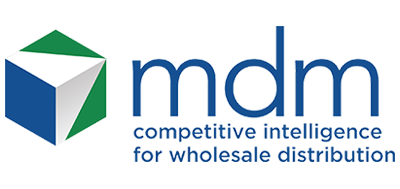The Institute for Supply Management’s latest Manufacturing Purchasing Managers Index (PMI) — regarded as a reliable barometer for the health of the U.S. manufacturing sector — retreated further in October to a mark of 50.2% — narrowly above breakeven for expansion. While in expansion territory for the 29th consecutive month, it was 0.7 percentage points from September and remained the lowest reading since May 2020’s 43.5%.
It was the PMI’s seventh consecutive monthly decrease.
After riding high from the second half of 2021 through the middle of 2022, the PMI has steadily decreased in recent months. It was as high as 60.8 in October 2021 and held steady in the mid-50s through May 2022 (56.1) before sliding to 53.0, 52.8 and 52.8 during June, July and August, respectively until September’s new low point.
For the index, any reading above 50.0 indicates expansion and anything below that indicates contraction.
“The U.S. manufacturing sector continues to expand, but at the lowest rate since the coronavirus pandemic recovery began,” noted Timothy Fiore, CPSM, C.P.M. and chair of the ISM Manufacturing Business Survey Committee. ”With panelists reporting softening new order rates over the previous five months, the October index reading reflects companies’ preparing for potential future lower demand.” Of the PMI”s six biggest manufacturing industries tracked — three; Machinery, Petroleum & Coal Products; and Transportation Equipment — registered moderate-to-strong growth in October, down from four in September.
|
Month |
Manufacturing PMI |
Month |
Manufacturing PMI |
|
Oct 2022 |
50.2 |
April 2022 |
55.4 |
|
Sep 2022 |
50.9 |
March 2022 |
57.1 |
|
Aug 2022 |
52.8 |
Feb 2022 |
58.6 |
|
July 2022 |
52.8 |
Jan 2022 |
57.6 |
|
June 2022 |
53.0 |
Dec 2021 |
58.8 |
|
May 2022 |
56.1 |
Nov 2021 |
60.6 |
|
Average for 12 months – 55.3; High – 60.6; Low – 50.2 |
|||
Eight total manufacturing industries reported growth in October, in the following order: Apparel, Leather & Allied Products; Nonmetallic Mineral Products; Machinery; Petroleum & Coal Products; Transportation Equipment; Miscellaneous Manufacturing; Plastics & Rubber Products; and Electrical Equipment, Appliances & Components.
The 10 industries reporting contraction in October compared to September, in the following order, were: Furniture & Related Products; Wood Products; Paper Products; Textile Mills; Printing & Related Support Activities; Fabricated Metal Products; Chemical Products; Primary Metals; Computer & Electronic Products; and Food, Beverage & Tobacco Products.
MANUFACTURING AT A GLANCE
October 2022
| Index | Series Index Oct | Series Index Sep | Percentage Point Change | Direction | Rate of Change | Trend* (Months) |
|---|---|---|---|---|---|---|
| Manufacturing PMI® | 50.2 | 50.9 | -0.7 | Growing | Slower | 29 |
| New Orders | 49.2 | 47.1 | +2.1 | Contracting | Slower | 2 |
| Production | 52.3 | 50.6 | +1.7 | Growing | Faster | 29 |
| Employment | 50.0 | 48.7 | +1.3 | Unchanged | From Contracting | 1 |
| Supplier Deliveries | 46.8 | 52.4 | -5.6 | Faster | From Slowing | 1 |
| Inventories | 52.5 | 55.5 | -3.0 | Growing | Slower | 15 |
| Customers’ Inventories | 41.6 | 41.6 | 0.0 | Too Low | Same | 73 |
| Prices | 46.6 | 51.7 | -5.1 | Decreasing | From Increasing | 1 |
| Backlog of Orders | 45.3 | 50.9 | -5.6 | Contracting | From Growing | 1 |
| New Export Orders | 46.5 | 47.8 | -1.3 | Contracting | Faster | 3 |
| Imports | 50.8 | 52.6 | -1.8 | Growing | Slower | 5 |
| OVERALL ECONOMY | Growing | Slower | 29 | |||
| Manufacturing Sector | Growing | Slower | 29 | |||
“Panelists’ companies continue to carefully manage hiring, month-over-month supplier delivery performance was the best since March 2009, and the Prices Index indicated decreasing prices for the first time since May 2020,” Fiore added. “Like in September, mentions of large-scale layoffs were absent from panelists’ comments, indicating companies are confident of near-term demand. As a result, managing medium-term head counts and supply chain inventories remain primary goals. With the decline in the Backlog of Orders Index, buyers and sellers will begin to shore up order books and order streams to reduce share loss in the medium-to-long term.”
Related Posts
-
It was a strong year-over-year growth month and sequential rebound from a month-to-month decline in…
-
Indices for new orders and employment had solid month-to-month gains, while production, inventories and prices…
-
It was the slowest expansion since June 2020 as prices took a major month-to-month decline…
